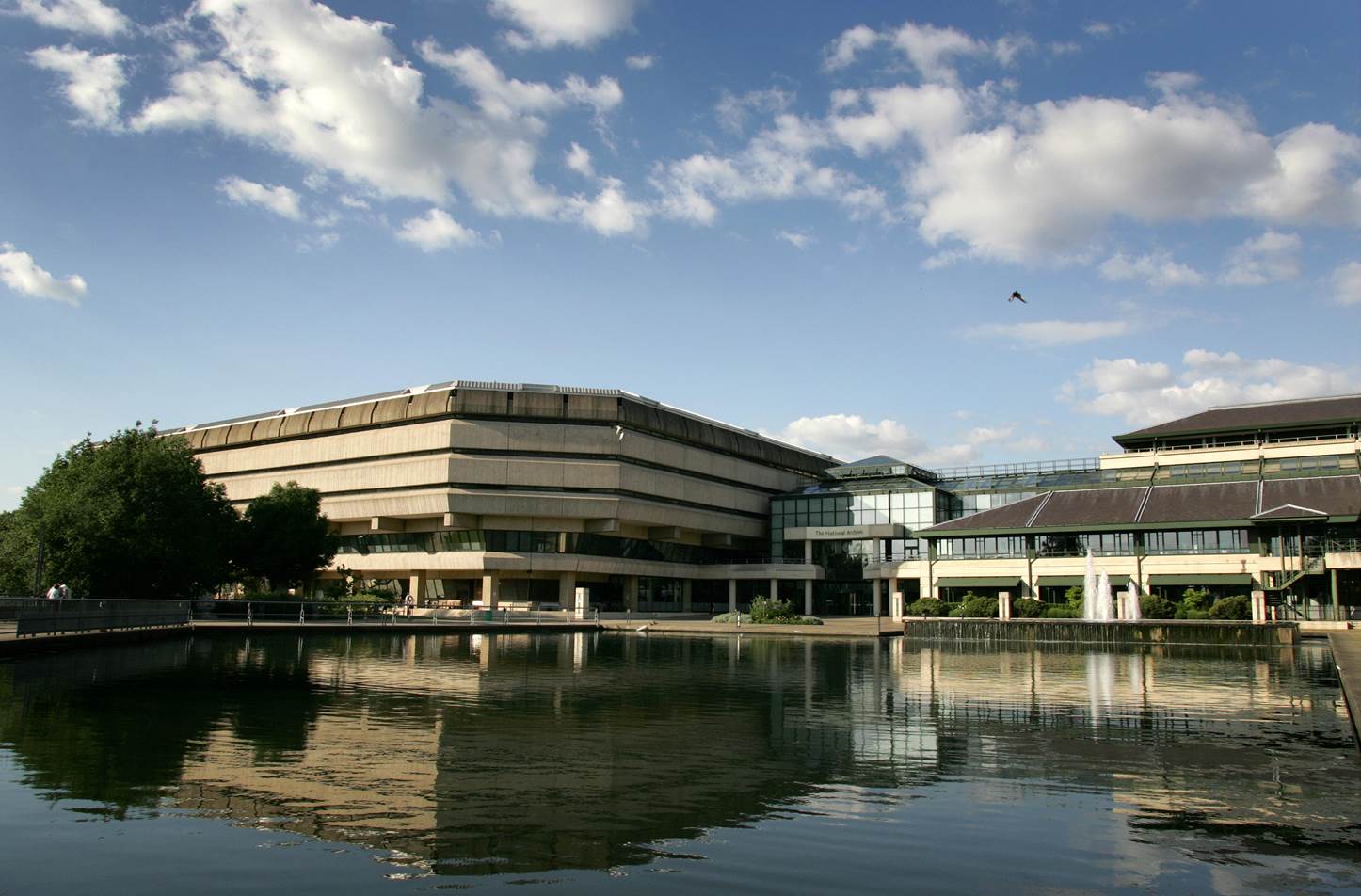Government has only dabbled with augmented and virtual reality so far, but the technology has a range of potential use cases, according to Jeremy Dalton of Immerse UK and PwC
Credit: Pxhere
Government has only dabbled with augmented and virtual reality so far, but the technology has a range of potential use cases, according to Jeremy Dalton of Immerse UK and PwC
Established three years ago with the backing of Innovate UK, Immerse UK is the primary industry body for the immersive technology sector. The organisation represents a wide range of members including tech firms, individuals, and representatives of academia and the public sector.
Its aim is to support growth and innovation throughout the immersive tech world – which includes products such as augmented reality and virtual reality (AR/VR) – as well as helping to inform public policy in the area.
Jeremy Dalton, who works for professional services firm PwC as head of AR/VR, sits on the Immerse UK advisory board.
His professional life is primarily focused on identifying and evangelising the ways in which the technology can be used to improve the operations of businesses and public bodies.
He tells PublicTechnology that the public sector is not leading the charge to adoption, but that he has already had a number of “interesting chats with councils across the UK”.
The investment might not yet have materialised, but there is an interest in the technology’s potential – particularly in the context of supporting people with mental and physical conditions to live more independently.
Virtual reality and augmented reality are becoming more prominent in society, in both our personal and business lives,” he says. “And there are a number of opportunities to use the technology for good. But, equally, there are a number of areas where the technology could be used in malicious ways and there are some safeguards that need to be put in place to ensure that doesn’t happen.
“There was one local government entity we were talking to about using virtual reality to help those on the autistic spectrum be more comfortable using public transport,” he says. “And that usually requires quite an involved programme where someone has to be effectively assigned to that person to help them, step by step, until they are ready to be independent.”
“However, in virtual reality… you could introduce them gradually to different concepts. Maybe one day you could make it outside and maybe the next day, you make it to the bus and make eye contact, but you don’t get on the bus. And then the next day you would be able to get on the bus. It’s a safe and controlled environment, but also an immersive environment. You are getting the real-world effect. But without the risks of being in the real-world scenario.”
Across all sectors, Dalton picks out training as the one of the leading use cases for organisations adopting AR/VR tools.
Virtual reality, he says, can demonstrably support the quartet of motivations that drive most businesses: “increasing revenue; decreasing costs; reducing complexity; and saving time”.
He cites the example of an oil and gas company having to send new engineers to undertake hands-on training on a rig.
“They have to be transported there, and that’s a cost in terms of time and money,” Dalton says. “Somebody has to facilitate their tour, so you need another person… to be there to manage that. And that part of the refinery may need to be shut down while the engineer is examining – so, there’s lost revenue on top of everything else.”
He adds: “If you recreate that entire environment digitally in virtual reality, then that is simply software…. And that means the engineer can now, in the comfort of their office or at home – anywhere in the world, in fact – access that environment and, through a computer-provided tour, go through the entire operation of the refinery, and even down to the specifics of what they need to do.”
One of the most popular business deployments of AR/VR is for “change management” initiatives, according to Dalton.
These typically involve using the technology to “help companies understand and adapt their culture”.
PwC’s AR/VR team recently conducted such an exercise with the senior leadership team of a global bank.
“They were interested in understanding how they can use virtual reality to help shift their culture in a more positive direction,” Dalton says. “So, we built this virtual reality experience to immerse them in the narrative of the now in the bank, in an effort to try and get across to them the current scenario they’re in, and help them think about how to move in a positive direction.”
Using AR/VR in this context allows for those engaging with the content to do so “in a very focused way, without distraction”.
“If you try and achieve the same thing on a computer, or through an e-learning system, or through a speaker on stage, the lost opportunity with all of those scenarios is that, firstly, you’re always an outsider,” Dalton says. “You’re not in that scenario, you’re just trying to imagine the scenario that’s being told to you. And, secondly, you are probably in a room with at least 10, 20, 30, maybe even 100 other people going through the same learning process or listening to the same presentation. There is no less incentive to concentrate in that situation.
“When you’re in virtual reality… you are immersed in that environment, you are feeling the effects of that world and what’s happening in that narrative. And that’s really impactful, and powerful, when you’re trying to get across a message… There is no minimising of application windows in virtual reality.”
Data and regulation
In addition to his day job at PwC and his work with Immerse UK, Dalton spent a year serving on the World Economic Forum’s Global Future Council on Virtual and Augmented Reality.
The council is one of 38 run by the WEF, each of which brings together an array of subject-matter experts in areas such as biodiversity, mental health, and financial systems.
Dalton, who continues to work with the council, says that the organisation’s remit is to promote the use of the technology to improve wellbeing and societal good.
$1.5tn
Global economic impact of AR/VR by 2030, according to PwC Seeing is believing report
400,663
Number of UK jobs that will be incorporate AR/VR in the next 10 years
$18.8bn
IDC forecast for global spending on AR/VR in 2020
13.9%
Proportion of AR/VR spending that will be generated in the public sector, according to IDC
“Virtual reality and augmented reality are becoming more prominent in society, in both our personal and business lives,” he says. “And there are a number of opportunities to use the technology for good. But, equally, there are a number of areas where the technology could be used in malicious ways and there are some safeguards that need to be put in place to ensure that doesn’t happen. And that’s also within the remit of the council – to help manage and promote those safeguards, as well as promote the opportunities for the good use of the technology in the world.”
Among the additional safeguards that might be needed are regulatory changes, and Dalton says that he hopes “the work that we’re doing could help inform that future specific regulation”.
This is likely to involve adaptations to existing frameworks, rather than regulators dedicated solely to AR/VR.
Dalton points to data protection as an area that will, increasingly, need to be cognisant of how the technology could impact the legislative landscape.
“For example, you could be wearing a virtual reality headset and you are moving around a virtual shop,” Dalton says. “You choose to go down one aisle, you look at a few items, you decide to pick one up and put it in your basket. Then you proceed to the checkout and make a payment. Now, consider what information could be technically gathered from such a scenario.”
He adds: “The software could record your height, because it knows where the headset is in relation to the ground, and it could track where you’re looking… and it knows how you’re moving, because your hands can be tracked through controllers. So, it knows how you’re acting, how you’re moving, your gait, your height, where you’re looking, what you’re picking up, and what you’re putting into your basket. And you can see an argument might be created that we have personally identifiable data here.”
Definitive answer
One question that continues to shroud AR/VR in mystery – and one that, perhaps, PublicTechnology should have addressed a little earlier – is, simply: what is it?
Like all emerging technologies – and a fair few fully emerged ones – there still exist a range of definitions and descriptions for what constitutes either augmented or virtual reality and what does not.
Dalton says: “Terminology in the immersive industry is confusing. There are a few contradictions, and there is no central body that has agreed definitions. But my view is that virtual reality and augmented reality are the two main terms, and they each comprise a spectrum.”
His own definition of VR is “the immersion into a completely different – usually digital – environment”. This is generally achieved through head-mounted displays, he says, but can also sometimes include projection systems and large screens designed to be immersive.
There was one local government entity we were talking to about using virtual reality to help those on the autistic spectrum be more comfortable using public transport. And that usually requires quite an involved programme where someone has to be effectively assigned to that person to help them, step by step, until they are ready to be independent.
“With augmented reality, meanwhile, you’re still in the real world, which is being digitally enhanced, either in the form of a flat overlay on top of that real world or, in some cases, with objects that lock to the environment in an expected way such as a digital chair that remains in front of a table,” Dalton adds.
The spectrum of AR/VR encompasses both the devices used and the content displayed.
“Devices could be everything from mobile phones in cardboard-cut out headsets, through to fully projected, four walls, floor-to-ceiling environments,” he says. “From a content perspective, you can have something like Pokémon Go, comprising a 2D image on top of a screenshot of the real world, all the way through to the flashing dials and buttons in a manufacturing context, for example, that you’re supposed to be clicking to achieve a certain action.”
But, however it is defined, Dalton – and his cohorts at Immerse and the World Economic Forum – are proceeding in the belief that AR/VR can, and will, have a positive impact on the world.
He says: “I not only believe they’re going to be a force for good, I think that they are going to have a profound impact on the way we work and the way we live.”
Jeremy Dalton spoke at the inaugural AR and VR in the Public Sector event earlier this week, on which PublicTechnology served as a partner



